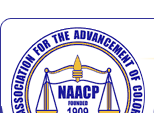Black History Month: Aviation Museum of N.H. hosts Feb. 9 program, exhibit of model planes built by Tuskegee pilot who was refused work by airlines
LONDONDERRY, N.H. — When a young Howard Carter from Boston joined the Tuskegee Airmen just after World War II, he achieved his dream: to fly.
In the then-segregated U.S Armed Forces, the Tuskegee program allowed hundreds of young African-Americans to serve as pilots, mechanics, and other aviation-related roles in all-black units that became famous for their daring exploits.
After six years piloting military transport missions in Japan, the Philippines and Guam, Carter left the service in the early 1950s. He'd accumulated plenty of flight time, and like many servicemen of the era, planned to become a commercial airline pilot in the booming airline industry.
But despite his experience and record, Carter ran into the color barrier in place among U.S. airlines at the time. He couldn't get an interview. No one would talk to him.
Forced to yield his dream to discrimination, Carter took more earth-bound work at the Charlestown Navy Ship Yard. Unable to earn a living as a pilot, he poured his passion for aviation into building elaborate large-scale model planes in the basement of his Roxbury, Mass. home.
A display of Carter's delicate scratch-built models will highlight a program about the Tuskegee Airmen on Saturday, Feb. 9 at 11 a.m. at the Aviation Museum of New Hampshire, 27 Navigator Road, Londonderry, N.H.
In honor of Black History Month, the program will feature a presentation by the Col. Charles E. McGee Chapter of the Tuskegee Airmen, Inc., based at Hanscom Air Force Base in Bedford, Mass.
"Howard's planes are tangible evidence for his love of aviation, but also vivid symbols of the discrimination he and so many other African-American aviators faced in the mid-20th century," said Jeff Rapsis, executive director of the Aviation Museum of New Hampshire.
"We're privileged to be able to display these unique artifacts in our museum in honor of Black History Month."
The planes will be unveiled at the Feb. 9 presentation, and then on display for the remainder of the month.
The program will also include a look at how segregation was practiced at Manchester's airfield in the 1940s, when it was Grenier Air Base and thousands of servicemen and women were pouring in from all parts of the country.
Members of the McGee Chapter will recount the Tuskegee story in vivid detail, displaying artifacts and including a video presentation about the World War II exploits of such storied units as the 332nd Fighter Group and the 477th Bombardment Group of the U.S. Army Air Corps.
The Tuskegee experiences were dramatized — and immortalized — in the hit George Lucas film 'Red Tails' (2012).
McGee Chapter members will focus on the story of Howard Carter, one of the few remaining Tuskegee Airmen with connections to New England.
Carter, 90, now resides in Florida and is unable to travel, so will not be in attendance at the presentation. Organizers will attempt to include Carter via Skype.
Over the years, Carter donated many of his gasoline-powered model planes to the Top Fun Aviation Toy Museum of Fitchburg, Mass., which is loaning the aircraft to the Aviation Museum of New Hampshire for the program and exhibit.
Dr. Rosalie Dunbar, director of the Top Fun Museum, will be on hand to speak of her friendship with Carter and provide historical perspective on the Tuskegee Airmen.
By focusing on Carter's life, organizers hope the program stirs attendees to contemplate the meaning of Black History Month.
|
|







